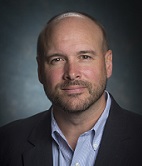Peer Reviewed Cancer
Brain Tumors Pose a Complex and Deadly Problem



Posted November 7, 2018
Pallavi Tiwari, Ph.D., Case Western Reserve University
Jason M. Warram, Ph.D., University of Alabama Birmingham
Edward Hinchcliffe, Ph.D., University of Minnesota Twin Cities
Rajeev Vibhakar, M.D./Ph.D., University of Colorado Denver
Primary brain tumors are broadly defined as tumors that are formed due to the abnormal growth of cells that originate in the brain. Tumors may be benign (i.e., localized to a single area) or malignant (i.e., an aggressive tumor that can spread to other parts of the brain and/or spinal axis). Brain tumors rarely spread to other parts of the body. As a benign brain tumor grows, it can grow into or press on other areas of the brain, impeding or ceasing the normal functioning in those areas. Therefore, even benign tumors require treatment.
There are numerous challenges involved with researching and treating brain tumors. The brain is a complex organ comprised of the three major parts: cerebrum, cerebellum, and brain stem. Each of these parts is comprised of multiple cell types, many of which may serve as the origin of a brain tumor. For most types of brain cancer the cause is unknown, and many of the specific tumor types are quite rare. For example, between 2007 and 2011 only 363 cases of atypical teratoid/rhabdoid tumors (ATRT) were diagnosed, which translates to an incidence rate of 0.12 cases per 100,000 people. For glioma, which represents approximately 53% of all diagnosed primary brain and central nervous system tumors in children aged between 0 and 14 years, 8,487 cases were diagnosed over the same time span, which only translates to an incidence rate of 2.78 per 100,000.1
Both children and adults can get brain tumors, and a number of factors influence a patient's chances for recovery, such as the type tumor, the tumor location, whether all tumor cells have been successfully removed by surgery, age of the patient. However, there are key differences between pediatric and adult brain tumors. For example, although both children and adults can be diagnosed with gliomas, the biology of the tumors is different between the two populations. This means that pediatric brain tumors require a different treatment regimen than adult versions of the same tumor. Additionally, although children diagnosed with brain tumors typically have a better prognosis than adults, pediatric patients often deal with long-term side effects from the treatment regimens. In contrast, adult brain tumors are more likely to progress to aggressive, malignant forms, and tumor recurrence occurs more commonly in adults.
The PRCRP Investment in Brain Tumors
The Peer Reviewed Cancer Research Program (PRCRP) has been tasked by Congress to fund research in the Topic Areas of Pediatric Brain Tumors and Brain Cancer. In fiscal year 2017 (FY17), the PRCRP invested $7.0 million in the Pediatric Brain Tumors and Brain Tumors Topic Areas. A few of these newly funded projects are summarized below.
Personalizing Treatment Options

Dr. Pallavi Tiwari
Pallavi Tiwari, Ph.D., Case Western Reserve University
Topic Area: Brain Tumors
Glioblastoma Multiforme (GBM) is the most common malignant tumor diagnosed in adults, with an incidence rate of 3.19 per 100,000 people.2 With her FY17 Career Development Award, Dr. Tiwari will conduct a retrospective study utilizing pre- and post-therapy magnetic resonance imaging (MRI) data, histology, and genomics data to "train" and develop artificial intelligence (AI) tools to identify predictive biomarkers for response to chemoradiation in brain tumors. If the biomarkers are validated, then the AI tools may be used to segregate chemoradiation therapy responders from those who will not respond. This would allow those identified as non-responders to pursue other avenues of treatment. Additionally, Dr. Tiwari hopes to identify biomarkers that would allow clinicians to effectively differentiate benign radiation necrosis on an MRI from cancer recurrence, thus preventing unnecessary biopsies in patients with the benign condition. With new AI-based assessment tools, physicians will be better prepared to design the best treatment option for every individual patient.
Advancing Surgical Interventions

Dr. Jason M. Warram
Jason M. Warram, Ph.D., University of Alabama Birmingham
Topic Area: Brain Tumors
GBM is a rapidly growing, aggressive tumor that grows diffusely into neighboring areas of the brain. Because of this diffuse growth and the limitations involved with distinguishing tumor cells from neighboring healthy cells, it is difficult to fully remove a GBM tumor surgically. Dr. Warram received a FY17 Idea Award with Special Focus to synthesize and test in preclinical models an imaging probe that is both sensitive and specific in distinguishing GBM tissue from healthy tissue. New imaging methods will help surgeons to spare healthy cells and remove only malignant cells.
Zeroing on the Origin of Gliomas

Dr. Edward Hinchcliffe
Edward Hinchcliffe, Ph.D., University of Minnesota Twin Cities
Topic Area: Pediatric Brain Tumors
Previous research identified genetic mutations associated with pediatric-onset, high-grade (i.e., aggressive) gliomas. Dr. Hinchcliffe recently completed a FY13 Idea Award with Special Focus, in which he began uncovering how commonly identified mutations may lead to tumor initiation and progression. (https://cdmrp.health.mil/prcrp/research_highlights/16hinchcliffe_highlight) In FY17 Dr. Hinchcliffe received a PRCRP Expansion Award to continue this crucial work on high-grade gliomas. The goals of the current award are to further explore Dr. Hinchcliffe's hypothesis that previously identified mutations inhibit a cell's ability to detect chromosomal defects, allow unstable cells to continue dividing, and ultimately lead to tumor growth. The foundational knowledge gained by Dr. Hinchcliffe will be key in developing new and effective treatments for high-grade gliomas.
Determining New Targets for Treatment

Dr. Rajeev Vibhakar
Rajeev Vibhakar, M.D./Ph.D., University of Colorado Denver
Topic Area: Pediatric Brain Tumors
Dr. Vibhakar received a FY17 Idea Award with Special Focus to study highly aggressive ATRT. Children who are under the age of three when diagnosed with ATRT have a particularly poor prognosis. Although there have been recent therapeutic advances to reduce tumor burden, these treatments are aggressive and have serious toxicity issues in such young patients. Dr. Vibhakar recently identified SIRT2 as a novel regulator of protein expression that appears to drive ATRT growth. The goal of this research is to validate these findings and determine whether SIRT2 is a viable target for new therapeutic approaches.
References:
- Ostrom QT, de Blank PM, Kruchko C, et al. Alex's Lemonade Stand Foundation Infant and Childhood Primary Brain and Central Nervous System Tumors Diagnosed in the United States in 2007-2011. Neuro-Oncology, Volume 16, Issue Suppl.10, 1 January 2015, Pages x1-x36. https://doi.org/10.1093/neuonc/nou327
- Tamimi AF, Juweid M. Epidemiology and Outcome of Glioblastoma. In: De Vleeschouwer S, editor. Glioblastoma. Brisbane (AU): Codon Publications; 27 September 2017. Chapter 8. https://www.ncbi.nlm.nih.gov/books/NBK470003/; https://doi.org/10.15586/codon.glioblastoma.2017.ch8
Last updated Monday, March 10, 2025














